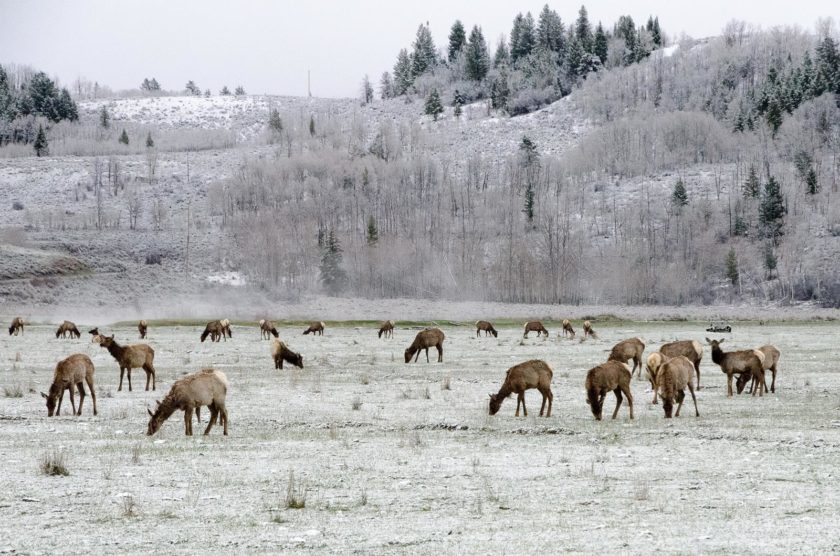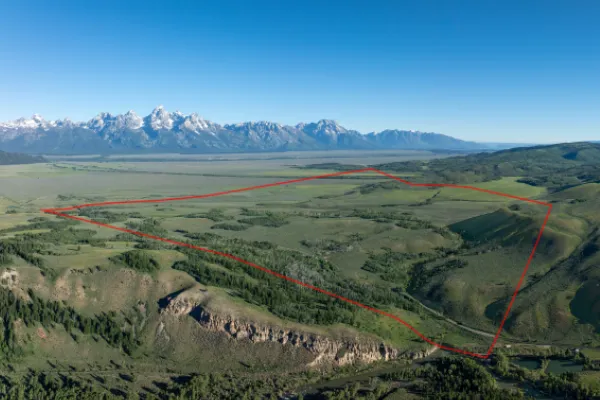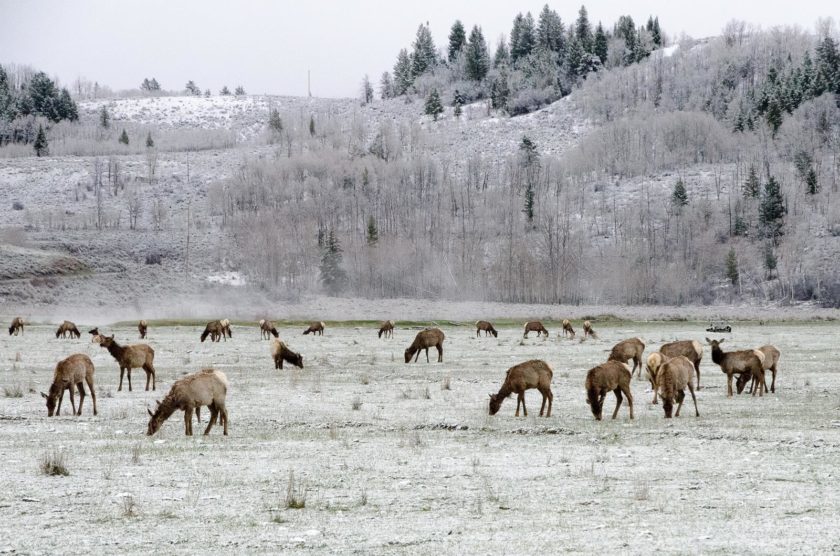
Photo by Jerry Herman
Winter is a quiet time in the Tetons. The natural soundscape has been measured at sound levels much softer than a music recording studio in winter. With such extremely quiet conditions, distant sounds can be audible for long distances. This likely facilitates a host of natural processes, such as carnivorous birds and mammals (like owls and foxes) being better able to detect prey under the snow.
• In December, native mountain whitefish and non-native brown, brook, and lake trout have wrapped up their fall spawning activities and settled in for the winter.
• Valley lakes will begin to see ice forming, most will be covered with ice by the of the month.
• Nearly all bears will be denned by the end of December, sleeping through the heart of the winter. Grizzly bear 399 is known to often den late. She was still active in the park as of December 7th this year.
• Winter closures to protect elk and other wildlife are now in effect in the park’s Snake River bottom, some high elevation bighorn sheep wintering areas, and throughout many local, national forest lands.
• As snow levels in the high country increase, Teton Range bighorn sheep move to small patches of rugged winter range where sun and wind keep upper elevation ridges relatively snow free. Most of this herd does not winter at lower elevations, which is typical for other herds.
• Bighorn sheep from the Gros Ventre population have already moved to lower elevations like Miller Butte on the National Elk Refuge, where they can often be seen from the refuge road.
• By this time of year, most deer and elk have migrated from summering areas to wintering areas, but snow will influence timing and migration rates.
• Contrary to previous expectations, it is likely that some bats actually spend winter in Jackson Hole. Grand Teton ecologists have picked up bat echolocations as late as mid-November so far this year, and in Yellowstone radio-tagged bats have been detected in every month of the winter.
• Moose have begun congregating in areas where bitterbrush is abundant, such as the sagebrush flats near the Jackson Hole Airport and north of the town of Kelly.
• Long-tailed weasels and snowshoe hares have traded in their brown summer coats for a more seasonally cryptic white fur. The weasels maintain the black tip on their tail to help distract potential predators.
• As snow accumulates on the valley floor, sage grouse begin seeking out tall sagebrush for shelter and food.
• Resident waterfowl, such as mallard, goldeneye, bufflehead, and trumpeter swans, become confined to ice-free waters (thermal areas or moving streams and rivers).
• Rough-legged hawks, a close relative of the red-tailed hawk, are now in the valley, having recently arrived from their arctic nesting grounds. They seem to be particularly abundant this year. Look for these beautiful birds on the refuge fence north of Jackson, in South Park, along the Moose-Wilson road south of Grand Teton National Park, and in the park’s Elk Ranch flats, just south of Moran Junction.
Winter is a tough time that draws upon all of animals’ resources to survive. Please help them maximize their chances of seeing another spring by enjoying them from a distance and being alert while driving.










